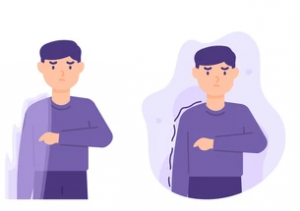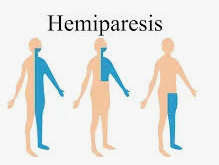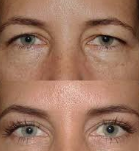Overview
Paraplegia is a type of paralysis characterized by the loss of motor, sensory, and limb function in the lower half of the body. It is a result of severe damage to the spinal cord and the nervous system or a result of an accident or a chronic condition. Paraplegia mainly affects the trunk, legs, and the pelvic region. You might have trouble moving your legs, feet, and stomach muscles. A doctor may prescribe physical or occupational therapy to help with pain and muscle issues. Physical therapy can also help a person preserve their strength and range of motion. Devices to support mobility, such as a wheelchair or a mobility scooter, are usually necessary. A doctor might also suggest some medications. For example, taking muscle-relaxing medications can help with pain or spasms. Taking blood-thinning medications will reduce the risk of blood clots. In some cases, surgery might be necessary. Surgery can help with swelling and removing lesions. There are currently no treatments to prevent or reverse paraplegia. However, it is possible to treat some of the symptoms and complications that occur. It is also possible for some people to regain partial or complete control over affected areas with time.
Types of Paraplegia
The type of Paraplegia depends on the symptoms and severity of the condition. Some common types of Paraplegia are mentioned below.
Complete Paraplegia
Complete Paraplegia is the total loss of motor and sensory function in the lower body due to spinal cord injury or disease. It can often lead to loss of bladder or bowel control.
Partial Paraplegia
Partial paralysis involves limited muscle function and sensation loss due to nerve damage or injury. Unlike complete paralysis, some movement and feeling remain, though they may be impaired.
Traumatic Paraplegia
Traumatic Paraplegia occurs when a severe injury, like a spinal cord trauma resulting from accidents, falls, or sports-related incidents, leads to paralysis of the lower body. This condition disrupts nerve signals between the brain and lower limbs, causing loss of sensation and movement control.
Non-Traumatic Paraplegia
Non-traumatic Paraplegia refers to lower body paralysis not caused by physical injuries. It can result from conditions like spinal tumors, infections, autoimmune diseases, or congenital abnormalities. Nerve signal disruption causes loss of sensation and motor function. Treatment involves addressing the underlying cause and rehabilitation and assistive measures to improve daily living and mobility.
Spastic Paraplegia
Spastic Paraplegia is a neurological disorder characterized by muscle stiffness and weakness, predominantly affecting the legs. It often stems from genetic mutations impacting nerve cells that control movement. This condition leads to difficulty in walking and coordination. Management includes therapies to alleviate symptoms and enhance functional abilities.
Congenital Paraplegia
Congenital Paraplegia is a rare condition present at birth, involving partial or complete paralysis of the lower body. It can result from genetic mutations, prenatal factors, or developmental issues affecting the spinal cord. Medical intervention and therapies support affected individuals in managing mobility challenges and maximizing their independence and quality of life.
Causes
People with paraplegia usually have an injury to the brain or spinal cord that prevents signaling to the lower body. The loss of signaling causes paralysis of the lower body.
According to the National Spinal Cord Injury Statistical Center, since 38.3% of spinal injuries have been the result of a vehicle accident, and 31.6% have been from falls. Some other common causes include violent crimes and sporting accidents.
Some chronic conditions can also lead to paraplegia. Conditions that might cause paraplegia include:
- tumors or lesions of the spine or brain
- neurological conditions, such as strokeTrusted Source or cerebral palsyTrusted Source
- autoimmune conditions, such as multiple sclerosis
Symptoms
There are many symptoms that can occur in paraplegia. Sometimes, these symptoms will change over time, or even from day to day.
Symptoms might include:
- a loss of sensation in the lower body
- impaired mobility
- weight gain
- depression
- phantom bouts of pain or sensation in the lower body
- chronic pain
- sexual dysfunction
- difficulty with bladder and bowel function
- secondary infections, such as bedsores and skin problems
- autonomic dysreflexia
Diagnosis
To diagnose paraplegia, a doctor will assess the person’s symptoms and medical history. They may also ask about recent accidents and whether or not the person has any family history of certain conditions.
It is important that they establish the cause of paraplegia to determine the most suitable treatment options.
Diagnosing paraplegia will usually involve medical imaging. These tests help doctors assess the damage and identify the cause of paralysis. For example, they might use an MRI scan, a CT scan, or an X-ray.
To test nerve functioning, the doctor may use electromyography. This test measures the body’s responses to the stimulation of the muscle.
Treatment Options for Paraplegia
There are several options for treating and managing Paraplegia. Depending on the condition and the severity, rehabilitation, assistive devices, medications, surgery, adaptive strategies, psychotherapy, and experimental therapies are options.
Physical Therapy
Physical therapy is pivotal in treating Paraplegia by enhancing muscle strength, flexibility, coordination, and overall mobility in the affected areas. Therapists employ exercises and techniques tailored to the individual’s needs and abilities. This helps improve range of motion, prevent muscle atrophy, manage spasticity, and develop adaptive strategies for daily activities. To maximize functional independence and enhance the quality of life for people with paraplegia, regular physical therapy sessions are a necessity.
Occupational Therapy
Occupational therapy is essential in paraplegia treatment, concentrating on developing practical skills for independent living. Therapists teach techniques for tasks such as self-care, home management, and work-related activities. They recommend adaptive equipment and strategies to enhance the individual’s ability to navigate daily life, fostering self-sufficiency and improving overall well-being despite the challenges posed by Paraplegia.
Medications
Medications are used to manage various aspects of Paraplegia. Muscle relaxants can help alleviate spasticity and muscle stiffness. Pain relievers address discomfort. Antidepressants and anti-anxiety drugs assist with emotional well-being. Blood-thinning medications reduce the risk of deep vein thrombosis—bladder and bowel control medications aid in managing urinary and fecal functions. To enhance mobility and quality of life for individuals with paraplegia, medication plans are tailored to their individual needs. These plans are usually combined with other treatments, such as physical therapy. It is best to consult a medical professional before starting any medication or treatment.
Assistive Devices
Assistive devices are crucial for paraplegia management. Wheelchairs provide mobility, while braces and orthotics support weakened muscles and aid stability. Adaptive tools like reachers, dressing aids, and modified utensils enhance independence in daily tasks. These devices empower individuals to navigate their environment and maintain a more fulfilling life despite mobility challenges.
Surgical Interventions
Surgical interventions address Paraplegia by relieving spinal cord compression, repairing fractures, or correcting deformities. Procedures like decompression surgeries remove pressure on the cord, while stabilization surgeries ensure spinal stability. Surgical options are tailored to the underlying cause and aim to alleviate symptoms, enhance function, and improve overall quality of life.
Rehabilitation Centers
Rehabilitation centers play a vital role in paraplegia treatment, offering comprehensive programs to improve physical, functional, and emotional well-being. Skilled professionals, including physical and occupational therapists, work to enhance mobility, independence, and adaptive skills. These centers provide tailored exercise regimens, mobility training, assistive technology guidance, and psychological support. By focusing on holistic rehabilitation, individuals with Paraplegia can regain self-confidence and maximize their potential for a fulfilling life.
Common Risk Factors for Paraplegia
Various factors contribute to the likelihood of developing paraplegia, ranging from traumatic incidents to medical conditions and genetic predispositions.
- Traumatic incidents like automobile accidents, falls, and sports injuries leading to spinal cord damage
- Medical conditions such as spinal tumors, infections, and degenerative disorders
- Engaging in activities with a higher potential for spinal injuries, such as extreme sports
- Certain congenital conditions or genetic predispositions increasing the risk of developing paraplegia
Conclusion
Paraplegia is a type of paralysis that affects the lower half of your body. It affects your ability to walk, stand, and do other actions that require control of your legs, feet, pelvic muscles, and stomach.
Paraplegia is generally the result of an injury, but it can also be caused by conditions that damage your spinal cord or brain. There is no cure for paraplegia, but with comprehensive rehabilitation, adaptive strategies, and advancements in assistive technologies, many individuals can significantly improve mobility, independence, and overall quality of life.
If you come across any of your loved ones and known people with any complications please feel free to email us all the latest reports at query@gtsmeditour.com and get medical opinion for free . whatsapp number +91 9880149003
Happy to assist..!
Thank you..!




















